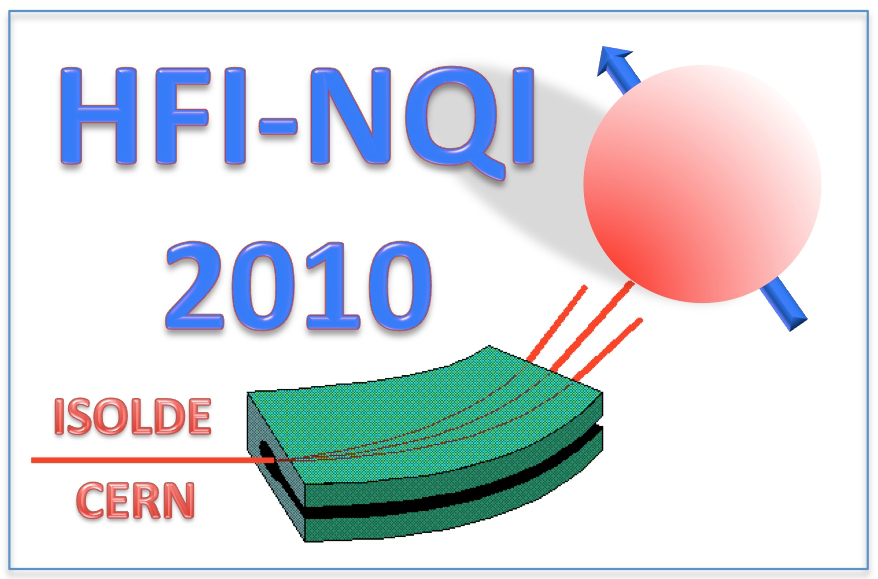Speaker
Prof.
Gerhard Wortmann
(2Department Physik, Universität Paderborn)
Description
The temperature and pressure dependence of the partial density-of-phonon states (phonon-DOS) at the iron sites in superconducting (sc) Fe1.01Se was studied by 57Fe nuclear inelastic scattering (NIS) of synchrotron radiation, a method well adapted for these studies as function of temperature and pressure [1,2]. As proved by a recent study of the isotope effect at the Fe sites on the sc temperature Tc in FeSe, superconductivity is intrinsically connected with the Fe phonon modes [3]. The sc properties of the present Fe1.01Se sample and their pressure dependencies were well characterized in previous studies using various methods, including 57Fe-Mössbauer spectroscopy [4-7]. The high energy resolution in the present 57Fe-NIS study allows for a detailed observation of spectral properties in the phonon-DOS not observed before, e.g. shifts of all spectral features to higher energies by ~4% with decreasing temperature from 296 K to 10 K. No detectable changes in the partial Fe phonon-DOS were observed at the tetragonal–orthorhombic transition around 100 K [7,8]. An applied pressure of 6.7 GPa, combined with an increase of the sc temperature Tc from 8 K to 34 K [8], resulted in an increase of the optical phonon-mode energies by ~12%, and an even more pronounced increase in energies of the lowest-lying transversal acoustic modes. Despite of these strong pressure-induced changes in the partial Fe phonon-DOS we conclude that the pronounced increase of Tc in Fe1.01Se with pressure cannot be described in the framework of classical electron-phonon coupling [8]. This suggests the importance of spin fluctuations for the observed superconductivity [9]. The present results are discussed in conjunction with the phonon-DOS of FeSe0.5Te0.5 X-tals, studied including its polarization dependence by 57Fe-NIS [10], where Tc = 15 K was observed at ambient pressure. Finally we present a synopsis of the complementary information on the sc Fe1.01Se and FeSe0.5Te0.5 systems, obtained from the elastic channel, 57Fe-ME [4-7], as well as from the inelastic channel, 57Fe-NIS [8, 10], of the 57Fe(14.4 keV)-Mössbauer resonance. References: * wortmann@physik.upb.de [1] A.I. Chumakov et al., Phys. Rev. B 54, R9596 (1996). [2] R. Lübbers, H.F. Grünsteudel, A.I. Chumakov, G. Wortmann, Science 287, 1250 (2000). [3] R. Khasanov et al., arXiv:1002.2510.v1. [4] T.M. McQueen et al., Phys. Rev. B 79, 014522 (2009). [5] S. Medvedev et al., Nature Mater. 8, 630 (2009). [6] V. Ksenofontov et al., contribution to this conference. [7] T.M. McQueen et al., Phys. Rev. Lett. 103, 057002 (2009). [8] V. Ksenofontov et al., Phys. Rev. B (in print); see arXiv:1004.2007. [9] T. Imai et al., Phys. Rev. Lett. 102, 177005 (2009). [10] V. Ksenofontov, G. Wortmann, T. Gasi, J. Deisenhofer, V. Tsurkan, C. Felser (unpublished)
| Are you a student, a delegate from developing countries or a participant with physical needs and would like to apply for a sponsored accomodation. Please answer with yes or no. | no |
|---|---|
| Please specify whether you would prefer an oral or poster contribution. | oral |
Author
Prof.
Gerhard Wortmann
(2Department Physik, Universität Paderborn)
Co-authors
A.I. Chumakov3
(European Synchrotron Radiation Facility)
C Felser
(Institut Anorg. Analyt. Chemie, Universität Mainz)
R. J. Cava
(Department of Chemistry, Princeton University)
S Medvedev
(Institut Anorg. Analyt. Chemie, Universität Mainz)
T Gasi
(Institut Anorg. Analyt. Chemie, Universität Mainz)
T. M. McQueen
(Department of Chemistry, Princeton University)
V Ksenofontov
(Institut Anorg. Analyt. Chemie, Universität Mainz)
